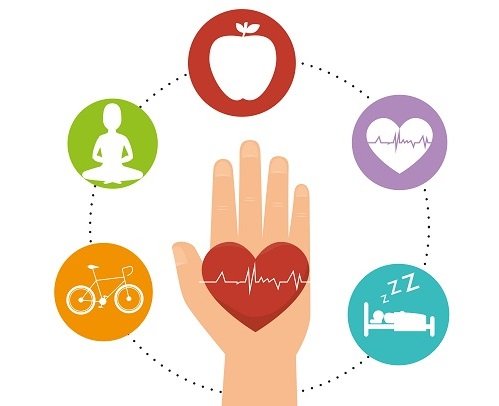15 Steps to a Healthier Heart: Exercise, Diet & Lifestyle Choices

Updated at: 2025-03-02 19:52:07 (8 months ago by Melkisedeck Leon Shine)
Strengthening Your Heart: A Holistic Guide to Exercise and Diet
Heart disease remains a leading global health concern, but the good news is that its prevention is largely within our control. As AckySHINE, a dedicated advocate for heart health, I'm thrilled to share practical strategies for safeguarding your cardiovascular system. This comprehensive guide outlines fifteen key steps to bolster your heart health through exercise and dietary choices. Let's embark on this journey to a healthier, stronger heart!
The Power of Movement: Exercise for a Healthy Heart
Embrace Aerobic Activity: Dedicate at least 150 minutes per week to moderate-intensity aerobic exercises like brisk walking, cycling, or swimming. These activities boost cardiovascular function and improve overall fitness.
Incorporate Strength Training: Build muscle strength and bone density with resistance exercises, such as weightlifting or using resistance bands, at least twice a week. This enhances heart health and prevents age-related muscle loss.
Nourishing Your Heart: Dietary Choices that Make a Difference
Prioritize Heart-Healthy Foods: Fuel your body with a diet rich in fruits, vegetables, whole grains, lean proteins (such as poultry and fish), and healthy fats (like avocados and olive oil). These nutrients provide essential vitamins, minerals, and antioxidants that support cardiovascular health.
Harness the Power of Omega-3s: Include fatty fish like salmon and mackerel in your diet. These are excellent sources of omega-3 fatty acids, known for their anti-inflammatory properties and beneficial effects on heart health.
Increase Fiber Intake: Boost your fiber consumption with foods like oats, beans, lentils, and whole grains. Fiber helps lower cholesterol levels and improves overall digestive health, which plays a role in heart health.
Limit Saturated and Trans Fats: Minimize your intake of saturated and trans fats found in processed foods, fried foods, and baked goods. These fats raise cholesterol levels, increasing your risk of heart disease.
Reduce Sodium Intake: Lower your sodium consumption to help regulate blood pressure. Choose fresh, whole foods over processed options that are often high in sodium.
Lifestyle Factors for a Thriving Heart
Hydration is Key: Stay properly hydrated by drinking plenty of water throughout the day. Adequate hydration supports blood circulation and overall bodily functions.
Manage Stress Effectively: Chronic stress takes a toll on the heart. Incorporate stress-reducing activities into your routine, such as yoga, meditation, deep breathing exercises, or engaging in hobbies you enjoy.
Avoid Smoking and Excessive Alcohol: Smoking and excessive alcohol consumption significantly increase the risk of heart disease. Quitting smoking and practicing moderation with alcohol are crucial for heart health.
Schedule Regular Check-ups: Regular visits to your healthcare provider for heart health screenings are vital for early detection and intervention of potential issues. Don't hesitate to discuss any concerns you may have.
Prioritize Sleep Quality: Aim for 7-9 hours of quality sleep each night. Sleep deprivation is linked to increased risks of high blood pressure, obesity, and diabetes, all of which contribute to heart disease.
Nurture Social Connections: Strong social connections provide emotional support and reduce stress. Make time for meaningful relationships and social activities.
Practice Portion Control: Be mindful of portion sizes to avoid overeating and weight gain, both of which can negatively impact heart health.
Find Joy in Healthy Choices: Choose exercise and healthy eating options that you truly enjoy. Making healthy choices enjoyable increases the likelihood of long-term adherence.
Conclusion: Your Heart's Journey Starts Now
Improving your heart health is a journey, not a destination. By incorporating these lifestyle changes and making consistent efforts, you’re significantly reducing your risk of heart disease and investing in a healthier, happier future. Remember to consult with your healthcare provider before starting any new exercise or diet regimen to ensure it's safe and appropriate for your individual needs and health status. Let's work together to build stronger, healthier hearts!
What are your experiences and insights on maintaining heart health? Share your thoughts and questions in the comments below!

